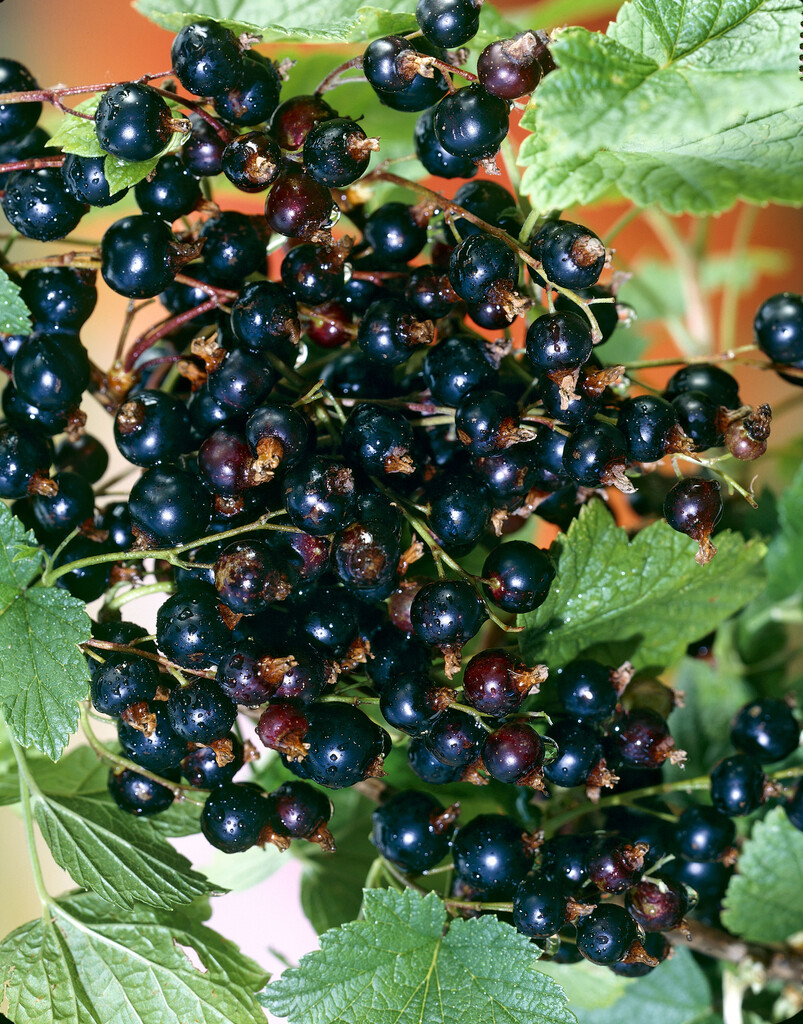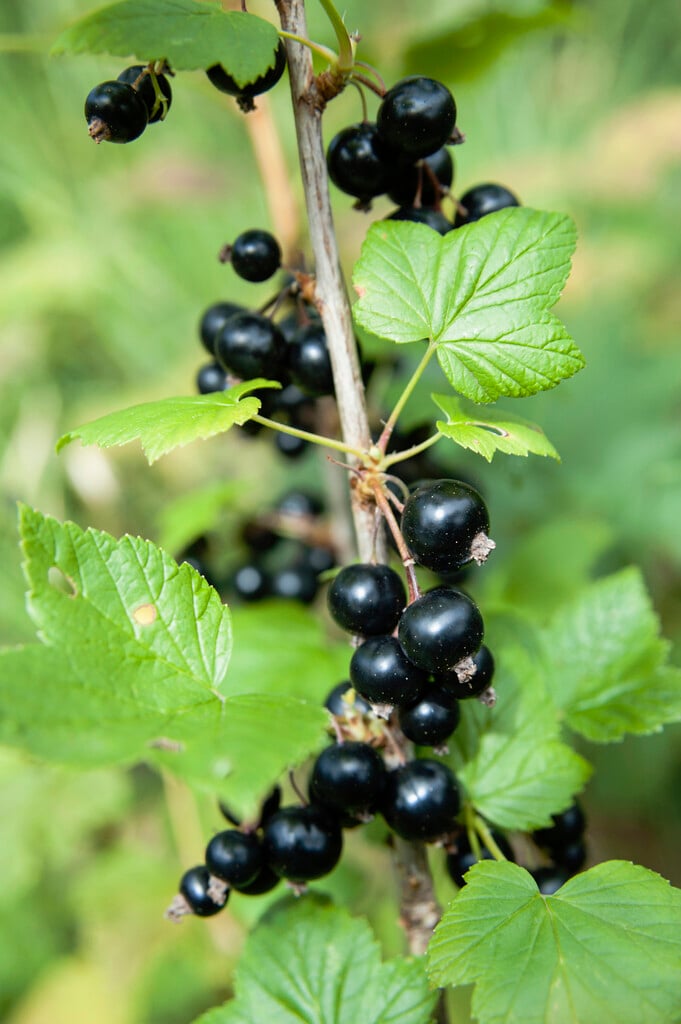Ribes nigrum (B)
blackcurrant
A deciduous shrub producing bunches of dark purple edible berries in mid-summer. The fruit, which is rich in vitamin C has a tart flavour and is great for cooking. The bushes are self-fertile and insignificant yellow-green flowers are produced in clusters in spring.
Other common names
European black currantEuropean blackcurrant
see moregazels
gazles
quinsy berry
squinancy berry
Size
Ultimate height
1–1.5 metresTime to ultimate height
2–5 yearsUltimate spread
1–1.5 metresGrowing conditions
Moisture
Moist but well–drainedpH
Acid, Alkaline, NeutralColour & scent
| Stem | Flower | Foliage | Fruit | |
| Spring | Green | Green | ||
|---|---|---|---|---|
| Summer | Green | Black | ||
| Autumn | ||||
| Winter |
Position
- Full sun
- Partial shade
Aspect
East–facing or North–facing or South–facing or West–facing
Exposure
Sheltered Hardiness
H6Botanical details
- Family
- Grossulariaceae
- Native to GB / Ireland
- No
- Foliage
- Deciduous
- Habit
- Bushy
- Genus
Ribes can be deciduous or evergreen shrubs, sometimes spiny, with simple, usually palmately lobed leaves and small tubular or bell-shaped, solitary or racemose flowers borne in spring or summer, followed by juicy, sometimes edible berries
- Name status
Correct
How to grow
Cultivation
Blackcurrants prefer a sunny site with well-drained but moisture-retentive soil, but will cope in most other soil conditions and tolerate light shade. Mulch annually with well-rotted manure or compost and apply a general purpose fertiliser in spring. Please see our blackcurrant cultivation page for more growing tips.
Propagation
Propagate by hardwood cuttings
Suggested planting locations and garden types
- Cottage and informal garden
- Wildlife gardens
- Edible fruit
Pruning
Prune in winter. Blackcurrants fruit best on younger wood so aim to remove up to one quarter of the oldest stems at ground level to encourage new growth from the base.
Pests
May be susceptible to gall mites, gall midge and aphids
Diseases
May be susceptible to a leaf spot, powdery mildews, coral spot and sometimes honey fungus
Love gardening
Sign up to receive regular gardening tips, inspiration, offers and more
View our Privacy Policy
Get involved
The Royal Horticultural Society is the UK’s leading gardening charity. We aim to enrich everyone’s life through plants, and make the UK a greener and more beautiful place.

